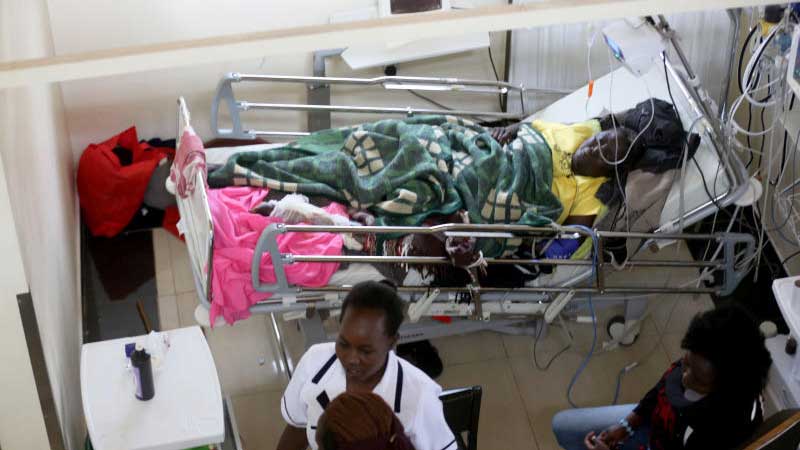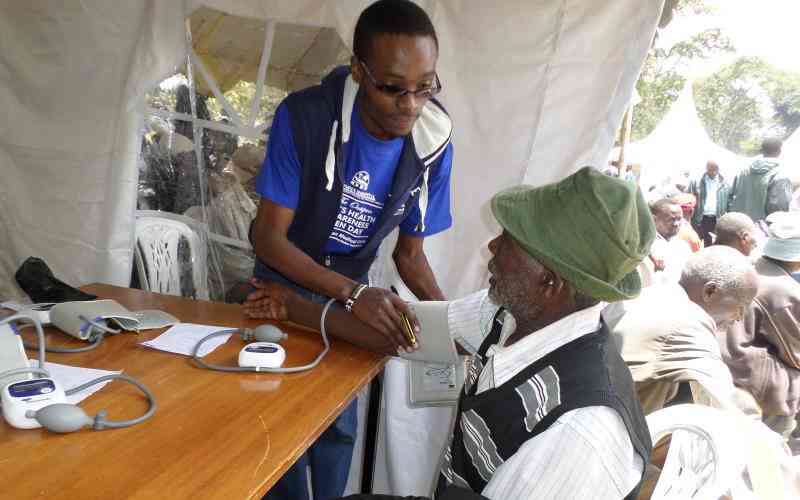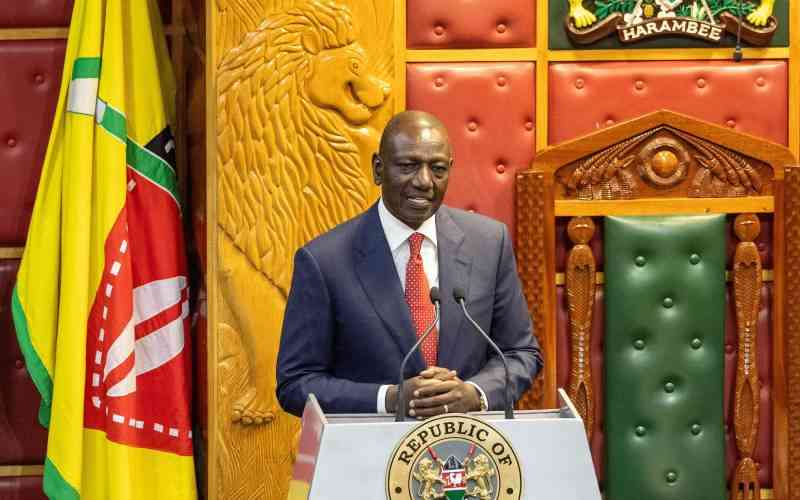
Patients requiring emergency medical attention have to scramble for limited Intensive Care Unit (ICU) services.
Although the Government has spent billions of shillings to equip 98 hospitals with modern infrastructure, data on the controversial Sh38 billion Managed Equipment Service (MES) reveal that the country has only 155 ICU beds against a population of about 44 million.
The deal, according to the Health Sector Health Sector Performance Review Report of 2016/2017, was meant to equip 11 public hospitals with ICU beds.
These are Jaramogi Oginga Odinga Teaching and Referral Hospital, Garissa, Coast, Nakuru, Kakamega, Nyeri, Embu, Thika, Meru, Kisii and Machakos county hospitals.
Kenyatta National Hospital (KNH), which is facing a backlash after the family of a 68-year-old woman said she died because she could not get space in the ICU, was not among hospitals targeted in the programme.
Karen Gacheru, the victim's daughter, took to social media last Wednesday, explaining how she was told that there was no bed in the ICU.
Her mother, Hanna Njoki, who had been involved in an accident, later succumbed to head injuries.
KNH management released a statement explaining that ‘their hands were tied’ as the hospital has only 31 ICU beds, and none was available at the time.
In March 2018, a report by the National Assembly Health Committee, led by Murang’a Woman MP Sabina Chege, found that KNH had 21 ICU beds.
“However, there is a huge number of patients staying longer than medically required hence taking up space needed by the sick patients waiting for admission,” the report read.
According to a 2015 report titled The Operational setup of Intensive Care Units in a low income country in East Africa, the country then had an average of 130 ICU beds across public and private facilities.
 The Standard Group Plc is a multi-media organization with investments in media platforms spanning newspaper print
operations, television, radio broadcasting, digital and online services. The Standard Group is recognized as a
leading multi-media house in Kenya with a key influence in matters of national and international interest.
The Standard Group Plc is a multi-media organization with investments in media platforms spanning newspaper print
operations, television, radio broadcasting, digital and online services. The Standard Group is recognized as a
leading multi-media house in Kenya with a key influence in matters of national and international interest.











